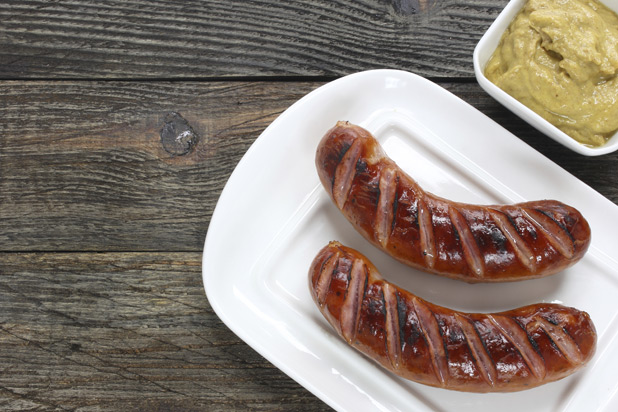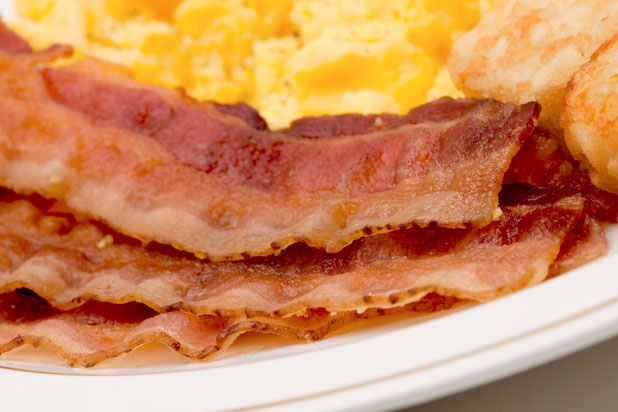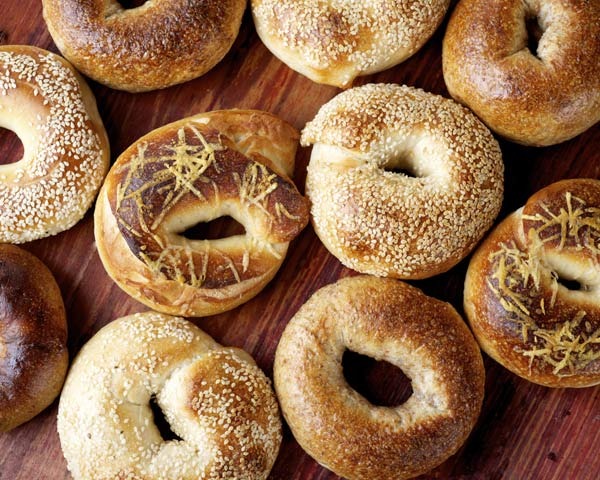The 20 Worst Things You Can Eat And Why
Every couple of years, it seems like another "groundbreaking" report is issued, proving once and for all that one food or another is either good for you, bad for you, or somewhere in between. And while the health benefits of certain foods, like red meat, will most likely be debated for all eternity, there are others, like sausage and potato chips, that nobody defends as healthy — foods that you should probably either avoid altogether or consume very little of. Here, we've rounded up 20 of them.
The 20 Worst Things You Can Eat and Why (Slideshow)
It's actually a lot more difficult than you may think to figure out whether a food item is "good" or "bad." The nutritional information on most packages doesn't reveal as much information as it might at first appear to, and especially when it comes to fat content (oftentimes the first indicator we look at to see if a food item is healthy or not), the number on the box can sometimes mean nothing at all. The reason? There are many kinds of fat, and not all of them need to be avoided.
"Our bodies need fat in order to function properly," explains nutritionist Keri Glassman. "And that means we must eat fat each and every day. Believe it or not, fat actually helps us burn fat. It also provides us with energy, enables hormones to work properly, insulates the body from the cold, and protects our organs. The key is to remember that not all fats are created equal. The "good" fats include monounsaturated fats, polyunsaturated fats, and essential fatty acids. Monounsaturated fats (olive oil, flaxseed oil, nuts) help increase the good (HDL) cholesterol and decrease bad (LDL) cholesterol. Polyunsaturated fats (corn oil, safflower oil, sesame oil, sunflower oil, nuts, and grains) help reduce total cholesterol. And essential fatty acids (fatty fish such as salmon, albacore tuna, mackerel, walnuts, flax, hemp, canola oil, safflower, and sunflower oils), which are a type of polyunsaturated fat, help reduce the risk of developing blood clots, arthritis, cancer, heart disease, and high blood pressure."
"On the other end of the fat spectrum are those heart-damaging bad fats: saturated fat and trans fat," Glassman continued. "These can increase your risk of cardiovascular disease and heart attack. Trans fats, found in packaged and processed foods, are the worst. Check labels to make sure they don't contain partially hydrogenated oil (the main ingredient in trans fats). Consuming a lot of saturated fats such as fatty cuts of beef, fried foods, poultry skin, butter, cheese, and baked goods can lead to negative cardiovascular outcomes, as well. However, new research shows that consuming a limited amount may be okay." [pullquote:left]
When you read a nutrition label, fat content is defined as "Total Fat," a combination of both good and bad fat. Nuts, for example, have more fat than bacon, but they're super-high in good fat, making them much healthier.
Of course, healthy food isn't defined by fat content alone. Calories, sugar, sodium, and how processed a particular food item is also indicate its nutritional value. A food item can be low in fat and calories, but pumped so full of chemicals and sodium that it's decidedly unhealthy. Also, the food we put into our bodies needs to be nutrient-rich, full of the vitamins, minerals, fats, and other components of "real" food that we need to survive. That's the definition of "healthy" food. If a food item doesn't contain essential nutrients it's unhealthy, even if it's fat-free.
To compile our list, we looked at foods that not only are full of fat, calories, sodium, sugar, and/or chemicals, but also that contribute little or nothing in the way of nutrition. Sure, cheese contains protein, but when you melt three slices of it onto a burger you're neutralizing any of its positive qualities. Eating healthy is about moderation, choosing "real" foods over fake processed ones, and portion control. It's also about making the right decisions and educating yourself as to why some foods are healthier than others. Read on to learn not only which foods are the worst that you can eat, but why they're so bad for you.
Sausage

Sausages (which includes everything from hot dogs to Slim Jims, bologna, and salami), by definition, are processed. When you process meat (which serves to keep it fresh longer, among other things) by smoking, curing, salting it, or preserving it via chemicals, you're loading it up with sodium, and the meat used usually also contains a ton of saturated fat, boosting the fat and cholesterol content into the stratosphere as well. Not only does sausage contain very little in the way of nutrients, excessive consumption has also been linked to colon cancer.
Bacon

Bacon may be one of the most delicious foods on earth, but it's also (unfortunately) horrible for you. Three slices of bacon contains about one-fifth of the suggested daily sodium allowance, but it's also cured using nitrates and smoke, which can contribute to increased chances of cancer and heart disease. Bacon is also fried in its own fat, which is full of saturated fat and cholesterol.
This story was originally published on April 17, 2014.
